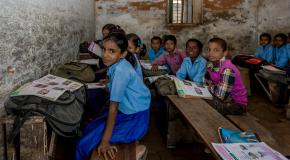How can Western companies stay ahead in the global talent wars? Is the supply of qualified local workers able to keep pace with the breakneck speed of economic growth in Asian countries?
Judging by persistently high unemployment levels in many rich-world countries, and growing pools of potential recruits in the developing world, policymakers and business leaders may be forgiven for viewing "talent wars" as a relic of a pre-downturn idyll. Such views may be misplaced: big demographic trends such as population ageing remain unchanged, and improving economic performance in the major economies over the next few years are likely eventually to result in demand for talent again outstripping supply. Moreover, even in developed countries, there remain today serious shortages of recruits with the critical "soft" skills companies require most.
Talent remains an important component of countries' and businesses' long-term competitiveness. How they develop, attract and retain talent should therefore remain high on the agenda of policymakers and business leaders for the foreseeable future. The global talent report: the outlook to 2015 seeks to inform their thinking by assessing talent trends around the world on two dimensions: at the international level through a benchmarking index of talent environments in 60 countries – the Global Talent Index, 2010-2015; and at the enterprise level, determining how executives view the outlook for their own firms' ability to attract and retain the people they will need.
Key findings from the Global Talent Index (GTI) include the following:
- The US is the stellar GTI performer, ranking first in 2010 and 2015. The US lead is almost one full point (on a 1-10 scale) in both years over the next best performers. The country's foremost strengths are the excellence of its universities, the high overall quality of its existing workforce and a meritocratic environment that is relatively unencumbered by restrictive labour regulation.
- Nordic and developed Asia-Pacific countries are also prominent in the GTI top ten. Denmark, Finland and Norway figure in the index top five in both 2010 and 2015, and Sweden joins them in the latter year – all thanks in part to their consistent and substantial investment in education from primary through tertiary level. Australia and Singapore are other strong performers, the former due, among other factors, to its high-quality universities and the latter to its openness to international trade and foreign direct investment.
- Canada, Chile and Turkey are the biggest gainers between 2010 and 2015. The rankings remain reasonably stable in both years, but noteworthy advances in 2015 are registered by Canada, Chile and Turkey. Improved economic performance is expected to help talent environments improve in these countries, while tough economic conditions contribute to the largest falls in the index in 2015, suffered by Greece and Venezuela.
- China outperforms other BRIC countries in the index. China rises to 31st place in the GTI in 2015 from 33rd in 2010, but more notable is the five-point improvement in its score – the largest increase in 2015 of any country in the index. A major contributor is an expected increase in the country's willingness to embrace foreign workers. Brazil also registers considerable improvement between 2010 and 2015, with employment growing quickly, expenditure on education rising and the language skills of the workforce improving.
The view from the boardroom and executive suite is likewise relatively positive when it comes to companies' abilities to attract the skilled people they will need in the coming years. But our survey and interviews nevertheless reveal concerns that talent wars will be reignited. Following are the major findings from this component of the research:
- Companies are generally confident of securing the talent they need, but with significant reservations. Just over 70% of surveyed executives are either “highly” or “somewhat” confident that their firms will be able to attract and retain key workers over the next two years. This confidence may be based to a large extent on recent experience, with 66% also reporting satisfaction with recent hires. Sizeable minorities, however, the largest being in Asia, are not satisfied with recent hires and are neutral or pessimistic on future prospects.
- Firms are increasingly relying on developing employees themselves, particularly in Asia. Unsure of the local availability of skilled staff, companies may often be recruiting raw potential, and then trying to hone this potential into the finished article. Half of our respondents reckon that they are devoting more time and money to employee development than they were just two years ago.
- Executives bemoan a lack of creativity in recruits. “The rarest personality traits,” says Karl-Heinz Oehler, vice-president of global talent management at the Hertz Corporation, “are resilience, adaptability, intellectual agility, versatility – in other words, the ability to deal with a changing situation and not get paralysed by it.” Creativity in overcoming challenges is the most serious shortcoming identified by executives in new and potential hires – most keenly felt in Asia and Latin America – and is something that may be particularly difficult to rectify.
The GTI results can be viewed in an Heidrick & Struggles Infographic.






